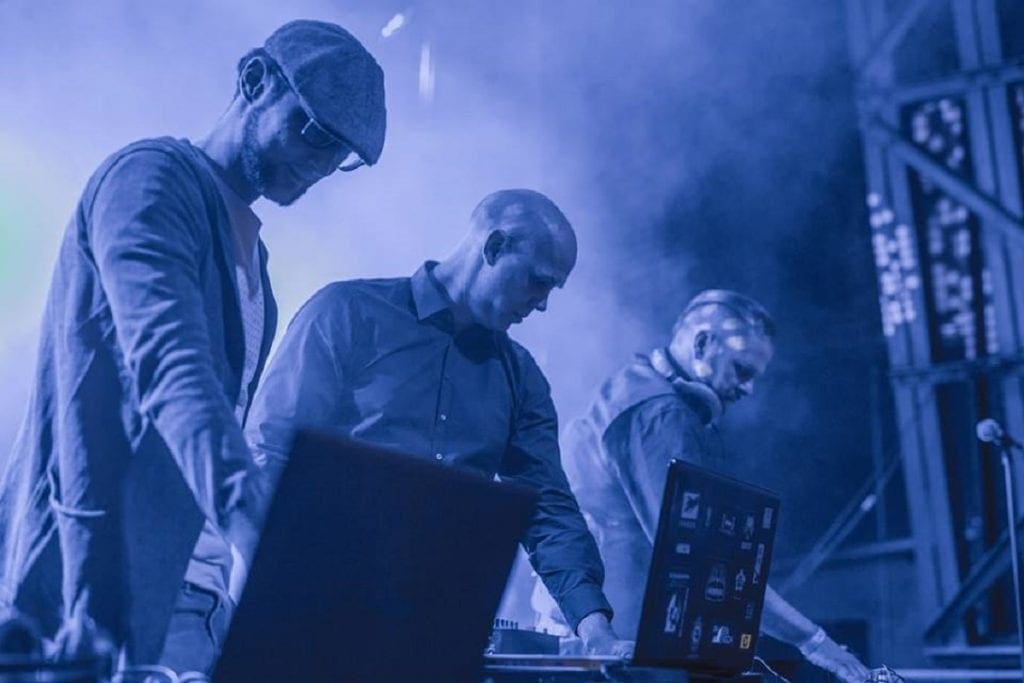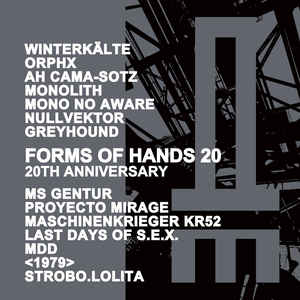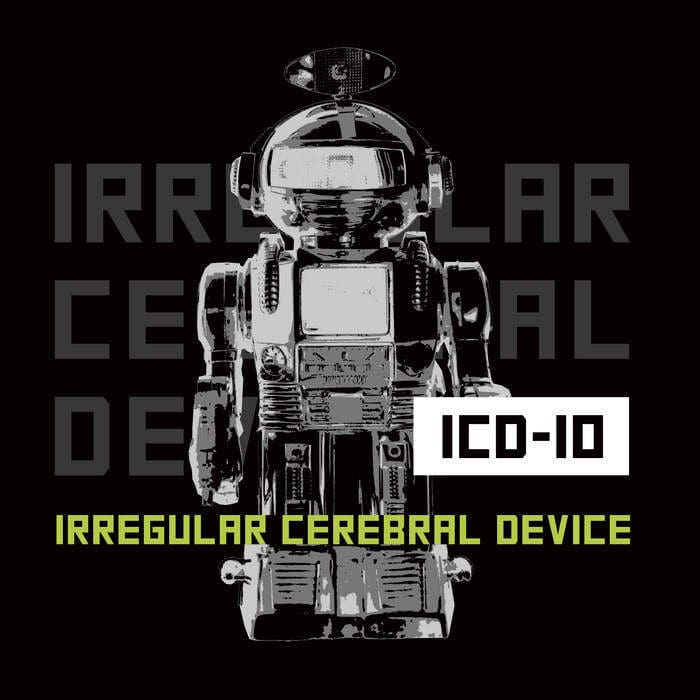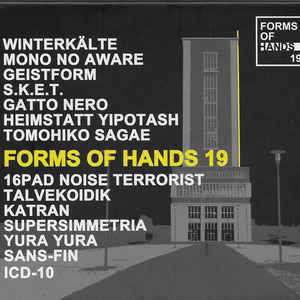‘Click Interview’ with Icd-10: ‘Some Make Music To Open Hearts – We Aim To Perforate Other Organs’


ICD-10 is a medical classification for systematization of diagnoses. It means ‘International Classification of Diseases‘ and was created by the WHO (World Health Organization). Industrial- and a lot of electronic music very often focused on structure and deconstruction. This definition of pathology gives ICD-10 the conception they might be able to define a clear line between health and sickness without diffusion, although the border between physiology and pathology often isn’t quite that clear. Like the definitions between a so-called crystal clear tone or rhythm at one hand and site riot sounds at the other hand are not that accurate as they seem to be. A distortion makes sound sometimes more interesting than a clear phrase and the sickness in sounds helps them to find roughness, drive and groove. This is the way Daniel Himmelreich introduces ICD-10, which recently released their official debut album “Differential Diagnosis” on Hands. This work is a judicious mix between industrial-, techno- and trance music. I got more details about it all from Daniel Himmelreich.
(Courtesy by Inferno Sound Diaries)
Q: I noticed you are already active for several years now. Can you briefly summarize how you guys met and what have been the main facts in ICD-10 history?
Daniel: Henning Hinck and me became friends around 15 years ago now. We both shared a preference for mainstream electronic music. Henning already started producing music at this point and organized industrial parties (“Rise of the Machines“). He’s still producing in many genres dealing with alternative electronic music like dark-psy, industrial, techno, IDM and many others (Voidscream, Constructor, Decuntstructivision etc.).
Back in time we had many exchanges about music we had in common, so in 2011 we had the idea to create music together. We started slowly, but were continuously working on ideas and tracks. We experimented to find our sound, workflow and drive. Very often we felt alright with tracks, which made us tap our feeds and nod our heads to the beat. Our sound got more and more shape at this time. Also we were playing a handful of gigs per year on little techno- and industrial events.
Around 2012 Henning started to work together with Wolfram Bange and his project Phasenmensch (signed on Hands). In 2016 I joined in to support Wolfram live on stage and we were working on remixes for each other. After creating “Divinity Unity Nothingness“, we tried to figure out which of our bundle of pure ICD-10 tracks would fit on an album. Since the beginning of 2018 we work together with a techno producer and DJ Thorsten Felix aka Toneflex. We found out that our ideas of music work very well together and our production processes got more balanced. So now we are a happy trio since the beginning of the year.
Q: You recently released your first official album “Differential Diagnosis” on Hands. What does this album mean to you, what is the title all about and how would you introduce this production?
Daniel: It is a great feeling to have an essence of our work and it shows the people a result of what we are doing. Sometimes it’s more industrial-techno orientated and sometimes even more on the noisier side of our personal taste.
Maybe the title is allegorical for the whole process of creating. First you have to find out what you want, you have a vision, but on the way to get there you have to balance the facts which may lead you to some other direction. Like in “Differential Diagnosis” you have to bring parts together, drop or modify parts which do not fit. Crystallize to the core, using neither too much nor to less information. Balancing between structure and intuition. We hope we had a little touch of that in our album and the diagnosis is well and differential enough to make people dance, get energized and shaken. To give the album a short and common trademark: it is an industrial-techno/dark-techno album with parts of rhythmic noise and IDM. Thankfully Udo Wiesmann from Hands shared our opinion to release this album. We enjoy the familiar, lovely atmosphere and support in the Hands family as already experienced before working together with Phasenmensch. So we are very happy to be part of Hands.
Q: “Differential Diagnosis” is not only driven by a dark-techno format mixed with industrial music, but still featuring sophisticated sound-treatments. Tell us a bit more about your ‘sound’ and the sound creation?
Daniel: We often build sketches separately, sometimes digital- and sometimes analog like. Henning is very structured, crispy, punchy and professional in his sketches. I’m more chaotic and ragged in my outlines, coming often from jamming with different digital or analog gear. Then we come together and are looking if our stuff fits into the ICD-10 sound and if we could build it up. The core concept of our workflow might be: every playfulness, texture or soundscape needs the direction forward surfing on the bassline.
ICD-10 tries to convulse the vessels in your mid ear and diaphragm. A short half-joking summary of the description of our sound is: ‘some make music to open hearts – we aim to perforate other organs’.
Q: Do you feel closer to the ‘techno’- or ‘industrial’ scene and how do you explain the fusion between both genres, which becomes quite ‘trendy’ today?
Daniel: I personally feel closer to the industrial scene. That’s where it all started. Henning is a bit more related to the techno-, breakcore- and dark-psy scene than me, but also has a main pillar in the industrial scene. In our view of electronic music historically, family comes together again with this new trend. We think the early drive of the industrial scene was quite equal to the early non-conform or independent techno scene. Surely industrial was more stick to a dystopian or anarchistic view and never became as popular as techno, but you can’t blame techno for becoming part of the mainstream. There is still much underground drive in that kind of music, particular nowadays.
Often there are all the discussions about the simple 4/4 rhythm or other repetitive patterns which make the sound techno and thus mainstream. So drumming on a steel sheet is the same cliché for so called true industrial? We both welcome an energy of openness and connectivity between genres which influence each other. That should be the attitude these days not only in music. And we also appreciate that parts of techno get more dystopian, rough, experimental and non-conform.
Q: You’re clearly in close terms with Phasenmensch. Two years ago now you released the album “Divinity/Unity/Nothingness” as a collaboration between both projects while they contributed on one of the songs on “Differential Diagnosis”. How did you get in touch and what makes this kind of chemistry between both projects?
Daniel: Henning organized Phasenmensch first bigger gig in our hometown Marburg while he was also doing some DJ-sets. There Wolfram was inspired by Henning’s techniques and production methods. So Henning became kind of a mentor for him and was working on mixing, mastering, remixing as well as writing collaborative tracks for most albums of Phasenmensch. When we started to support Phasenmensch the idea to make a full collaboration album happened very fast. Sometimes it wasn’t easy to bring our ideas together, but it helped a lot to sharpen our profiles, which guided us at the bottom line to our combined character. The fusion of Wolfram´s ambient, dreamy and as well internalized tone on the one hand and the more effect driven, pulsing, aggressive, rumbling sound of ICD-10 on the other hand finally directs us to something that feels new, but guided us also to important facets of our projects.
Q: How do you transpose the album to the stage? How do you see yourselves on stage and what did you try to express?
Daniel: If our music is the lightning we try to evoke the thunder on stage. A bit less overblown description might be: we try to bring the punch and energy of our sound on stage and make people move, but also fill up the presentation of our album with some new, also unexpected elements and textures or variations. We were lucky to have our first live presentation of “Differential Diagnosis” at the well known “Forms Of Hands”-festival this year. On most of our stuff we’ve the intention to bring a faster heart rate to the audience. Let’s say it with the ICD-10: R00.2 – that’s the code for throbbing. Now we are three people and lately we work on new ideas how live performances could be in the near future. So we will see what the future brings…
Since you’re here …
… we have a small favour to ask. More people are reading Side-Line Magazine than ever but advertising revenues across the media are falling fast. Unlike many news organisations, we haven’t put up a paywall – we want to keep our journalism as open as we can - and we refuse to add annoying advertising. So you can see why we need to ask for your help.
Side-Line’s independent journalism takes a lot of time, money and hard work to produce. But we do it because we want to push the artists we like and who are equally fighting to survive.
If everyone who reads our reporting, who likes it, helps fund it, our future would be much more secure. For as little as 5 US$, you can support Side-Line Magazine – and it only takes a minute. Thank you.
The donations are safely powered by Paypal.










